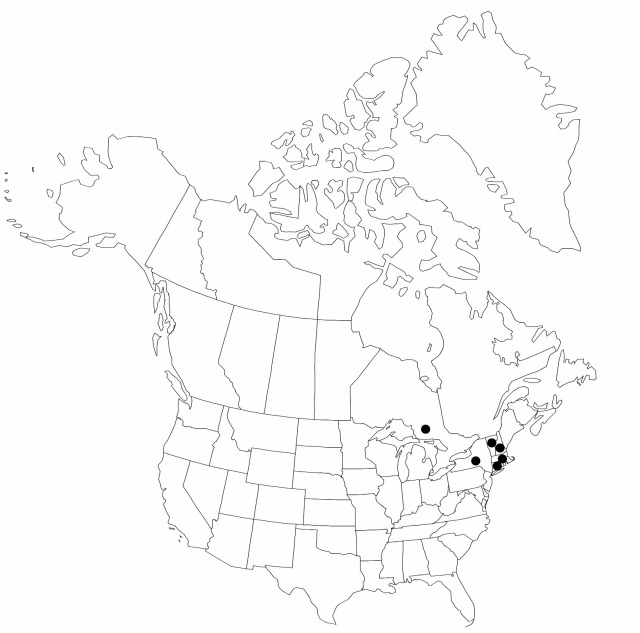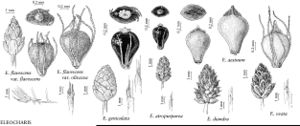Eleocharis diandra
Bull. Torrey Bot. Club 10: 101. 1883.
Culms often spreading or reclining, 2–25 cm × 0.3–1 mm. Leaves: apex of distal leaf-sheath acute to acuminate, tooth sometimes present, to 0.2 mm. Spikelets ovoid, 2–7 × 1–4 mm, apex subacute; proximal scale either with flower or empty, base encircling 1/2 of culm; floral scales 50–100, 10 per mm of rachilla, orange to purple-brown, ovate, 1–1.5 × 0.8 mm, midrib slightly keeled, apex rounded to acute. Flowers: perianth bristles absent; stamens 2 (–3); anthers yellow, 0.2–0.3 mm; styles 2-fid or some 3-fid. Achenes 0.7–1 × 0.6–0.9 mm. Tubercles deltoid 0.1–0.2 × 0.25–0.45 mm, 1/3–1/2 as high as wide, 1/8–1/4 as high and 3/4–9/10 as wide as achene.
Phenology: Fruiting late summer–fall.
Habitat: Fresh, mostly sandy, shores of large lakes and streams, sometimes slightly tidal
Elevation: 0–100 m
Distribution

Ont., Conn., Mass., N.H., N.Y., Vt.
Discussion
Of conservation concern.
Eleocharis diandra is close to E. ovata and E. aestuum; it probably should be treated as a distinct species (A. Haines 2001). It is apparently adapted to the greatly fluctuating water levels of rivers and large lakes (e.g., Oneida Lake in New York, Lake Champlain in Vermont). I have not seen specimens of E. diandra from Maine, New Jersey, or Pennsylvania, which may be based on specimens of E. aestuum. Specimens from the Lake-of-the-Woods shore in southwest Ontario are like E. diandra; they have floral scales with apices rounded, not acute as in typical E. diandra. The only recent observations of E. diandra are from the Connecticut River in Massachusetts (1985) and Oneida Lake in New York (1968; A. Haines 2001).
Selected References
None.
Lower Taxa
"shortened" is not a number.
